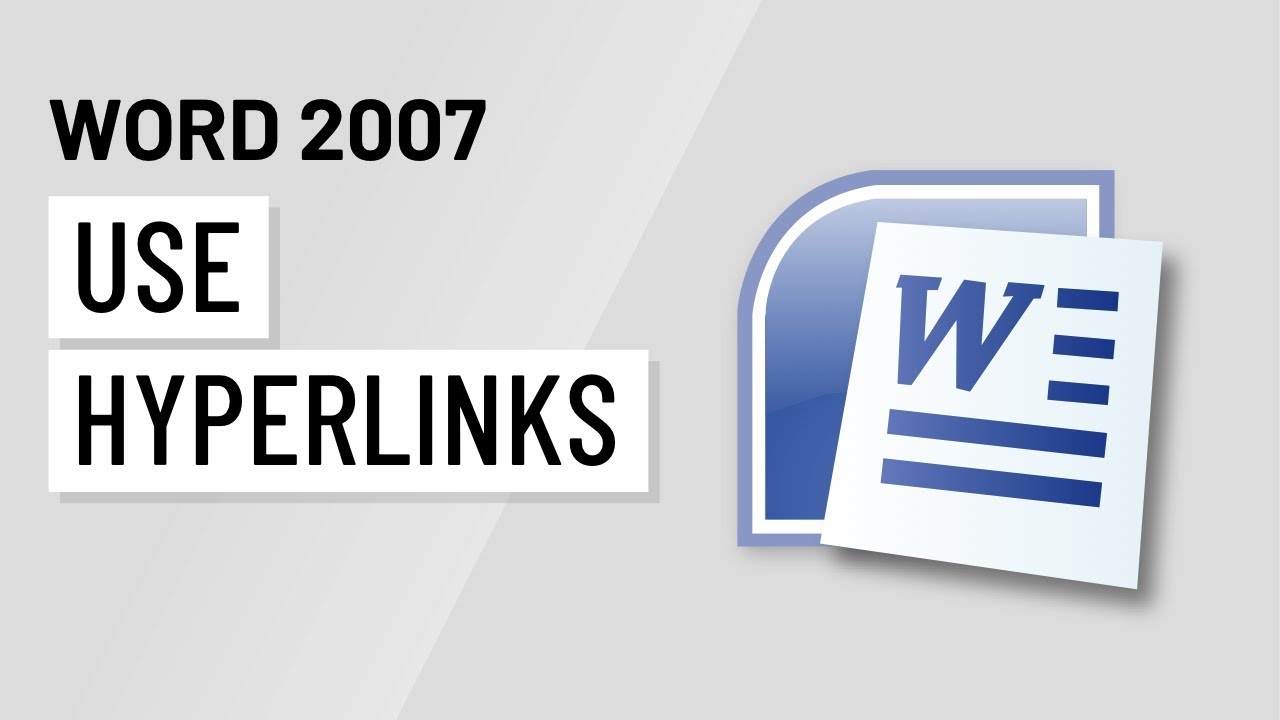
Introduction:
In the dynamic realm of document creation, Microsoft Word 2007 introduced a host of features to enhance functionality and user experience. Among these, the ability to incorporate hyperlinks stands out as a powerful tool for seamlessly integrating web content, references, and external resources into your documents. This comprehensive guide explores the intricacies of working with hyperlinks in Microsoft Word 2007, empowering users to create interactive and connected documents with precision and ease.
I. Understanding the Power of Hyperlinks:
- Enhancing Document Interactivity:
- Hyperlinks serve as bridges between different parts of a document or external online resources, elevating document interactivity and user engagement.
- Navigating Web Content:
- Incorporating hyperlinks enables users to seamlessly navigate to web pages, documents, or specific locations within a document, providing a dynamic reading experience.
II. Inserting Hyperlinks:
- Hyperlink Options:
- Word 2007 offers various hyperlink options, allowing users to link to websites, email addresses, specific document locations, or even create links to new documents.
- Inserting Web URLs:
- Insert hyperlinks to web URLs by selecting the text or image, right-clicking, and choosing the “Hyperlink” option.
- Email Hyperlinks:
- Create email hyperlinks by entering email addresses and customizing the hyperlink text to initiate email composition when clicked.
III. Navigating Hyperlink Dialog Box:
- Linking to Existing Files:
- Word 2007’s hyperlink dialog box facilitates linking to existing files, making it seamless to connect different documents or resources.
- Targeting Specific Locations:
- Specify specific locations within a document by navigating to a specific page, heading, or bookmark within the hyperlink dialog box.
IV. Customizing Hyperlink Text:
- Descriptive Link Text:
- Opt for descriptive hyperlink text that conveys the destination or purpose of the link, enhancing clarity for users.
- Styling Hyperlinks:
- Customize hyperlink text formatting to distinguish it from regular text, improving visibility and user experience.
V. Creating Hyperlinked Images:
- Image Hyperlinks:
- Transform images into hyperlinks by selecting the image, right-clicking, and choosing the “Hyperlink” option, providing a visually engaging navigation experience.
- Image Link Tips:
- Add alt text to image hyperlinks to provide informative descriptions for accessibility and SEO purposes.
VI. Editing and Removing Hyperlinks:
- Modifying Hyperlinks:
- Edit existing hyperlinks by right-clicking and choosing the “Edit Hyperlink” option to update the link address or text.
- Removing Hyperlinks:
- Remove hyperlinks while retaining the linked text or image by right-clicking and selecting “Remove Hyperlink.”
VII. Navigating Hyperlinked Document Sections:
- Internal Document Links:
- Utilize internal document links to navigate between different sections or headings within the same document, enhancing document organization.
- Creating Bookmarks:
- Establish bookmarks within a document to facilitate precise linking to specific locations, providing a seamless reading experience.
VIII. Cross-Referencing:
- Referencing Headings and Figures:
- Cross-reference headings, figures, or tables by using hyperlinks, ensuring accurate and dynamic references in documents.
- Automatic Update:
- Word 2007’s cross-referencing feature automatically updates hyperlinks when changes are made to referenced elements, maintaining document accuracy.
IX. Hyperlink Styles and Formatting:
- Styling Hyperlink Appearance:
- Customize the appearance of hyperlinks by modifying hyperlink styles, ensuring consistency and a professional aesthetic throughout the document.
- Understanding Hyperlink Colors:
- Familiarize yourself with default hyperlink colors and ensure readability against the document’s background for optimal visual appeal.
X. Hyperlinks in Tables and Lists:
- Incorporating Hyperlinks in Tables:
- Embed hyperlinks within tables to create interactive data sets, linking to relevant resources or additional information.
- List Hyperlinks:
- Create hyperlinks within lists to provide users with additional context or detailed information related to list items.
XI. Testing Hyperlinks:
- Verification Process:
- Before finalizing a document, test hyperlinks to ensure they accurately navigate to the intended destinations, verifying a seamless user experience.
- Addressing Broken Links:
- Address and fix any broken hyperlinks by updating addresses or confirming the availability of external web resources.
XII. Hyperlink Security Considerations:
- Securing External Links:
- Exercise caution when linking to external websites, ensuring that linked content is reliable, secure, and relevant to the document’s context.
- Avoiding Phishing Risks:
- Be vigilant about avoiding hyperlinking to suspicious or phishing websites, maintaining document security and user trust.
XIII. Document Collaboration with Hyperlinks:
- Collaborative Editing:
- Hyperlinks facilitate collaborative editing by allowing users to link to relevant documents, resources, or references within the collaborative workspace.
- Commenting with Hyperlinks:
- Enhance comments or annotations with hyperlinks, providing additional context or referencing external materials.
XIV. Hyperlink Management and Navigation:
- Document Navigation Pane:
- Utilize the Document Navigation Pane in Word 2007 to easily navigate through hyperlinked sections, enhancing document management.
- Table of Contents Hyperlinks:
- Generate a table of contents with hyperlinks to streamline document navigation, providing readers with an overview and quick access to specific sections.
XV. Mastering Hyperlink Techniques:
- Continuous Exploration:
- Mastery of hyperlink techniques involves continuous exploration of advanced functionalities and creative uses of hyperlinks in document creation.
- Tutorials and Online Resources:
- Explore tutorials and online resources to stay updated on the latest hyperlink features and best practices for optimal document creation.
XVI. Conclusion:
- Elevating Document Connectivity:
- By mastering the art of working with hyperlinks in Microsoft Word 2007, users can elevate document connectivity, user experience, and interactivity.
- Creating Engaging Documents:
- The incorporation of hyperlinks transforms static documents into engaging, dynamic, and interconnected resources, catering to modern expectations of document interaction.
As you navigate the rich landscape of hyperlinks in Microsoft Word 2007, you unlock the potential to create documents that seamlessly integrate online resources, facilitate navigation, and enhance user engagement. Embrace the diverse capabilities of hyperlinks, experiment with creative implementations, and empower yourself to produce documents that transcend traditional boundaries of static content.